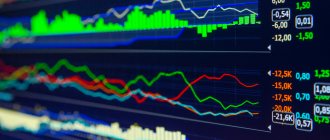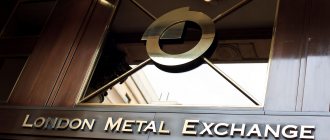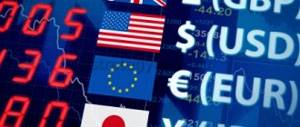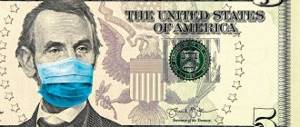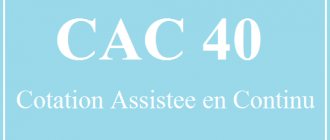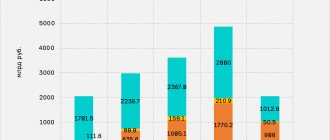How is the stock market organized?
Most countries in the world have their own exchanges, where they work with stocks, futures, bonds and other instruments. They work in their own time zones, which is why some trading platform is active almost all the time during the day.
On Forex, a trader does not see chart breaks . At the beginning of the day, the stock exchanges of Asia and the Pacific region work, then it is time for Europe and later the United States, which ends the day. In the terminal you will see a continuous chart, although liquidity is provided by different financial centers throughout the 24 hours.
The same principle holds true in the stock market. But this does not mean that you can buy shares of any company only during the opening hours of the corresponding exchange. For example, Apple is traded not only on NASDAQ , where it was listed. You can buy them on German and Swiss stock exchanges, and in the spring of 2018, these securities were admitted to repo trading on the MICEX .
True, volumes on other sites are minimal, especially in comparison with NASDAQ :
The same is true in the opposite direction. Gazprom's securities are traded not only on the MICEX, but also on NASDAQ.
Websites for viewing the operating hours of sites
Exchange trading times vary depending on the country. There may also be local specifics, for example, in the Asian region a lunch break is common, and holidays are also different. For convenience, it is better to view this information on specialized sites:
- Investing.com – one of the best information and analytical portals with Russian language support. A whole section is dedicated to calendars - here are holidays, stock exchange opening hours, IPO schedules, dividend payments. Read the full review of the Investing website by following the link.
- Stockmarketclock – for all major exchanges, working hours, holidays are given, and there is also a brief description of the trading platform.
- Market24hclock – the service is different visibility. There are fewer exchanges here, but the operating hours of each of them are shown on the clock dial, making it clearer when exactly the overlays occur.
Please note that some countries switch between summer and winter time , so opening hours vary depending on the time of year. There is no need to memorize the operating schedule of stock exchanges, but add at least one of the listed information services to your bookmarks.
Premarket and postmarket
In addition to the trading session itself, there are also pre- and post-market :
- Pre-trading period is the phase before the start of the main trading in which buyers and sellers, having agreed on the details of the transaction, conclude it through the exchange. If a non-addressed order , then it is accepted, but executed within the trading session .
- Post-trading phase - the auction is held for settlements between brokers and traders. During the same period, repo transactions are carried out, and margin positions are carried over to tomorrow.
The duration of the pre- and post-market depends on the exchange and ranges from 10-15 minutes to an hour.
Trading on the Belarusian Currency and Stock Exchange for today
Results of trading on the Belarusian Currency and Stock Exchange
Trading on the Belarusian Currency and Stock Exchange is held every working day, and determines foreign currency rates against the Belarusian ruble for the next day. Since June 1, 2015, trading on the BVSE takes place in a new mode, called the continuous double auction mode. This is by no means a new method of trading - many standard exchanges use it: everyone who wants to sell or buy a particular currency submits applications through the bank for its purchase, the quantity and their “price” for it. And in the event that the application of the currency seller and the buyer intersect, the transaction is concluded. There is also another type of applications - without a price, when a specific rate is not indicated, and the currency is purchased at the market price, from the lowest and in ascending order.
The bidding process on the BVSE
Trading on the Belarusian Currency and Stock Exchange today takes several hours, opening at 10:00 am, and lasts 2 hours - until 12:00, after which the session is closed and results are summed up. As a result, a basket of currencies is formed, consisting of the euro, US dollar and Russian ruble. After the denomination, an innovation appeared at currency exchange offices - the rate for some currencies (Russian ruble, Ukrainian hryvnia and Polish zloty) is indicated in hundreds and tens. This decision was made by the National Bank of Belarus for a more accurate determination of the exchange rate and ease of perception.
Currency trading in Belarus today can be monitored online to reduce possible risks to a minimum. Some banks offer their clients to connect to such a system automatically when submitting an application for trading.
The results of trading on the Belarusian Currency and Stock Exchange are calculated based on the weighted average purchase and sale rates of various currencies. The results can be unpredictable, and there is almost always a certain dynamics, the ruble is either weakening or strengthening. Trading allows you to form a rate for the next day, and if it took place on Friday, then for the weekend and Monday.
The results of the auction depend on many factors, both foreign economic, global and internal:
- global economic crisis;
- level of foreign trade (export of goods of own production);
- the state of the national currency of the main partner - Russia, whose dollar exchange rate is directly dependent on the price of oil;
- trust in one's own national currency;
- the level of supply and demand for a particular foreign currency and others.
The results of trading in foreign currencies at OJSC "BVSE" are a guideline for banks when determining exchange rates, and fluctuations in various directions cannot exceed more than 2%. Banks are allowed to change rates to new ones on the same day when the official trading results become known.
MICEX Schedule
We present the trading schedule on the Moscow Exchange in tabular form (hours are indicated in capital time).
| Market | Trading session | Premarket | Postmarket |
| Stock | 09:30 — 19:00 | ||
| Foreign exchange, urgent and commodity | 10:00 — 23:50 | 09:45:00 - 09:59:59 (pre-trading period) 09:50:00 - 09:59:30 (collection of orders) | 18:45:01 - 18:49:59 (bonds) 18:40:01 - 18:50:00 (closing auction itself) |
Pre- and Post-Trading and Auction Notes:
- On the MICEX, the opening auction is available only for shares (Russian and foreign), ETFs, depositary receipts, shares, euro and ordinary bonds denominated in euro. It is also available for OFZ traded in T+1 .
- The closing auction is available for shares, euro and ordinary bonds denominated in US dollars, as well as for OFZ in the T+1 order book.
I note that the MICEX website has very visual calendars:
- General – it highlights holidays. Grey colour – options expiration dates.
- Interactive version – in addition to holidays, a brief description of important events on different days is also noted.
As for which instruments to trade on the MICEX, the choice is wide and it is not limited only to Russian stocks or bonds. From 2021, securities of US companies .
Working on the stock exchange does not necessarily involve active trading . As an option, create an investment portfolio and wait for the securities to rise in price. Previously, I published a post on how to form an investment portfolio, in which this issue was discussed in more detail.
Is it possible to earn money? Training to work on the stock exchange
Is it possible to somehow make money during these periods and does it even make sense to trade? Yes, you can make money. I have formations that I use to execute trades during these periods and they work well. A couple of recommendations about the post-trading period. Look at the stock's order book, looking for a discrepancy between the closing price of the main session and large orders in the order book in the post-trading period. With good attentiveness, you will definitely find interesting points that can be traded.
Now a few words about the pre-trading period. During this period, you can open a position without waiting for the opening of the main session. Why is this necessary? Sometimes you can jump into a position before the market opens on a strong instrument that was stronger than the market on the previous day or, for example, broke through an important level and the probability of continuing the movement at the opening is quite high. At the opening, it is sometimes impossible to enter a position, since the instrument either shows a strong gap or rapidly begins to grow. The main thing is to be careful and analyze the glass before entering. If suddenly something doesn’t go according to plan, quickly jump out of the position. If you do everything quickly and have straight hands
